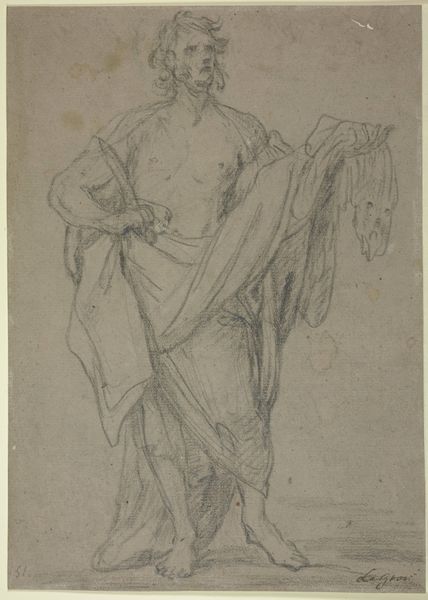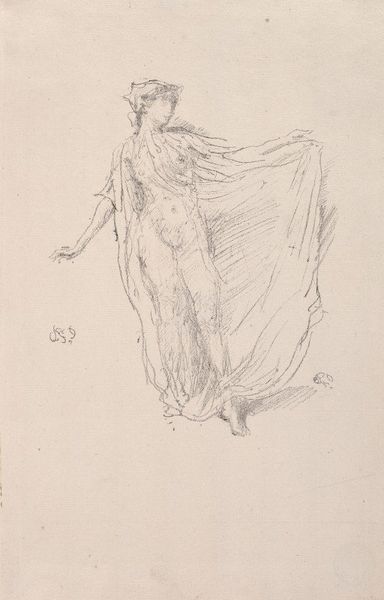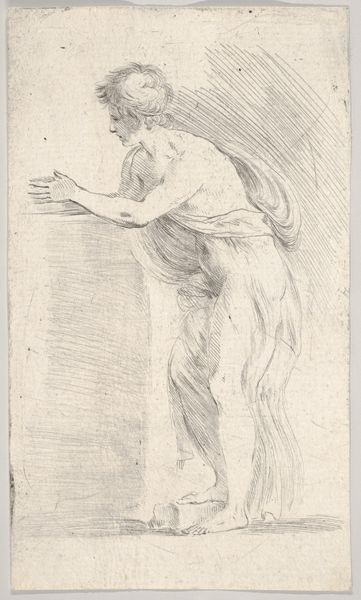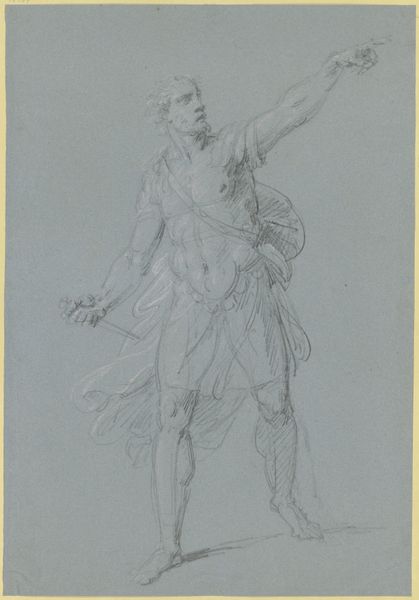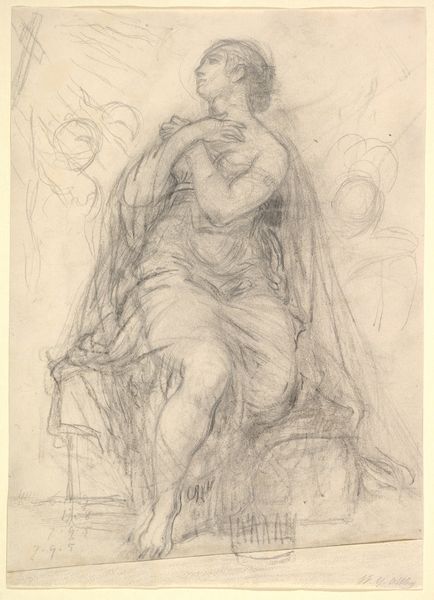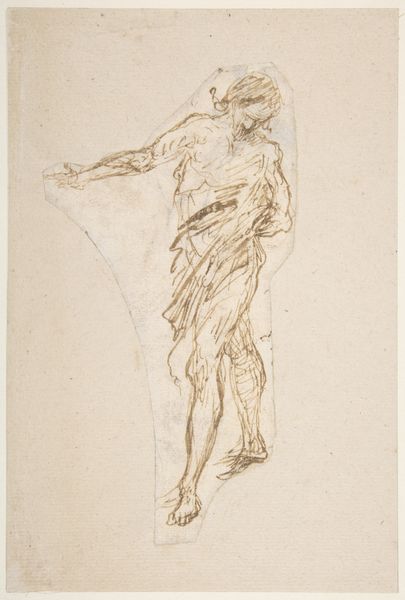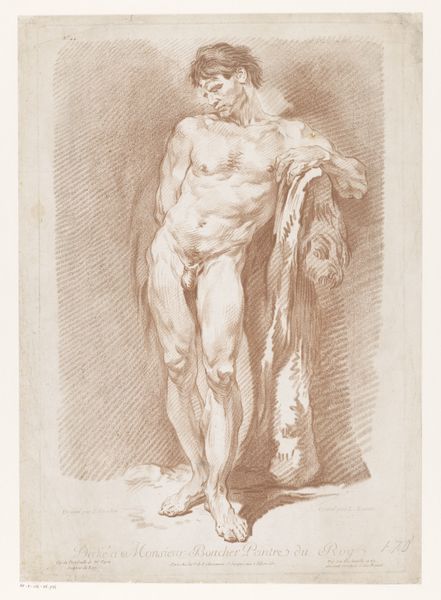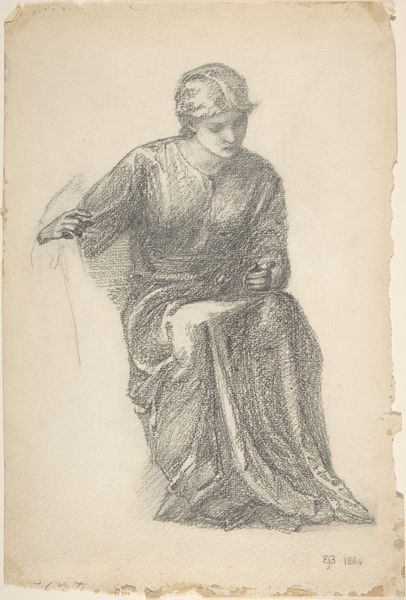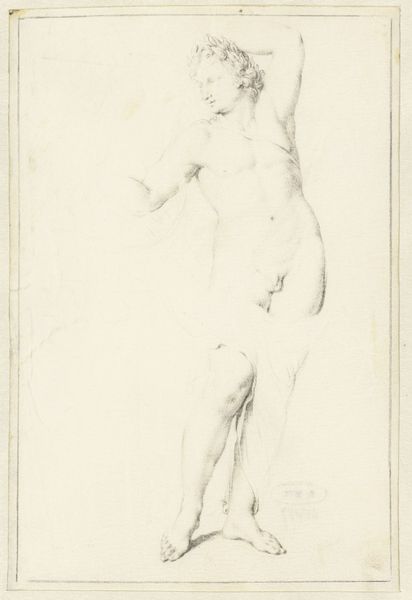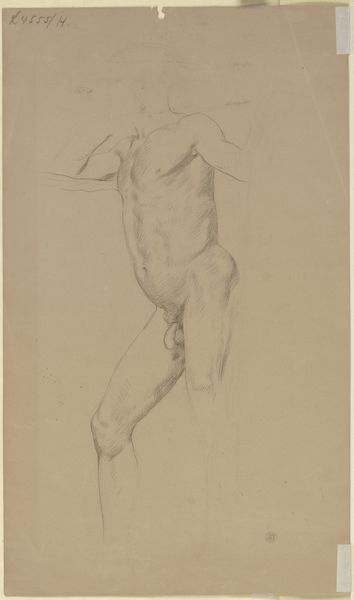
drawing, pencil, chalk
#
portrait
#
drawing
#
baroque
#
figuration
#
pencil
#
chalk
Copyright: Public Domain
Curator: Here we have "Allegorical female figure", a pencil and chalk drawing located at the Städel Museum and attributed to Gaspare Diziani. What are your initial thoughts on the artwork? Editor: It has a tentative quality. You can almost feel the artist working through the figure, searching for the right form. The layering of pencil and chalk creates depth despite the sketchiness. Curator: This initial impression resonates strongly. Diziani, known for his contributions to the Venetian Baroque movement, was very interested in depicting female figures often representing allegorical and mythological concepts. Understanding the baroque interest in using grand theatrical displays of emotion, what sociopolitical factors influenced such a style? Editor: From a materials standpoint, chalk and pencil were relatively accessible and easily portable. This drawing hints at a world where artists could disseminate classical forms in multiples, potentially challenging the exclusivity often associated with painting and sculpture during that time. Was Diziani associated with a specific workshop? Curator: Diziani's training took place within the artistic circles of Venice, a hub of cultural and economic exchange. This fostered opportunities for artists. Considering Venice was known for trading goods like silk and glass during the 18th Century, what's your take on this drawing? Editor: Given Venice's prominence as a trading center, the figure’s billowing garments, so meticulously rendered, hint at access to fine fabrics. Maybe the materiality, not just of the artwork itself but of the allegorical figure’s clothing, subtly alludes to economic power structures. Curator: Absolutely, her elaborate attire speaks volumes about status and power. If we view her open hand as a gesture of generosity or invitation, what are the social dynamics being emphasized here? Who gets invited? Whose generosity is celebrated? Editor: Interesting questions, all tied back to access, resources, and representation. This artwork shows that seemingly straightforward studies of the human form, were enmeshed within complex networks of making, production, and trade. Curator: Precisely, it makes you think more deeply about who these representations were for, what narratives they served, and who was excluded from this carefully constructed worldview. Editor: Indeed, reflecting on the artistic process in this light gives me pause. Thanks to a combination of aesthetic charm and astute artistry, Gaspare Diziani delivers more than just a draft.
Comments
No comments
Be the first to comment and join the conversation on the ultimate creative platform.
